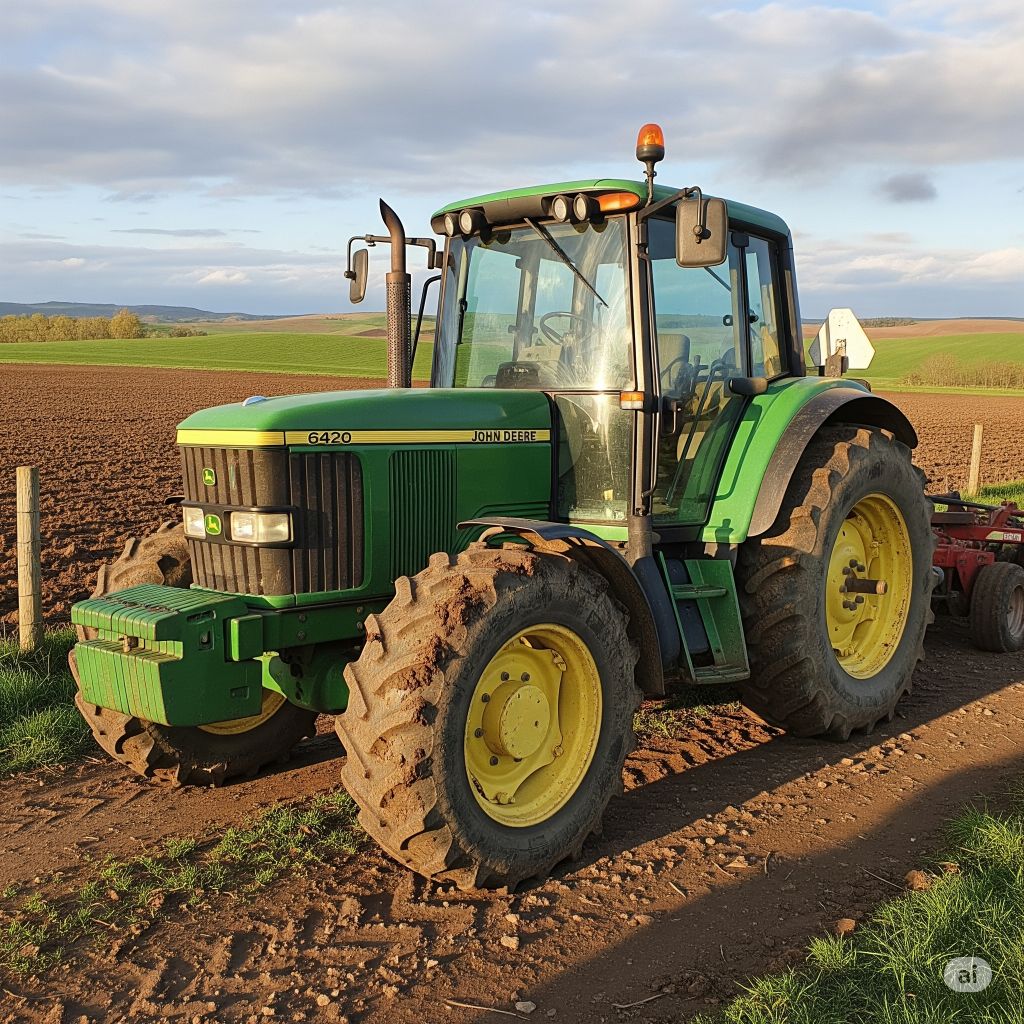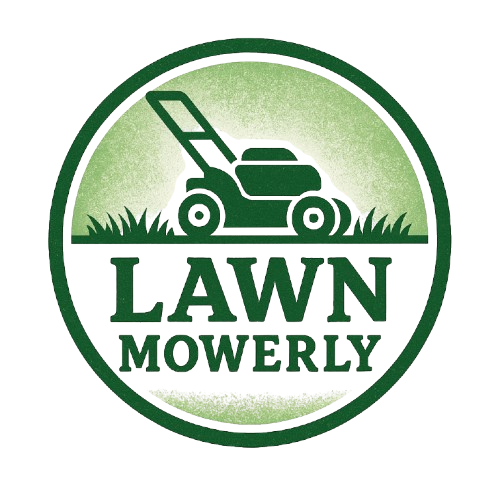
dependable hydraulicsThe John Deere 6420 is widely appreciated for its versatility, reliability, and performance in both agricultural and utility applications. It’s part of the popular 6020 series and is known for its powerful 100-hp engine, dependable hydraulics, and user-friendly controls. However, like any workhorse machine, the 6420 has a set of common issues that operators and owners should be aware of.
This article takes a deep dive into the most reported problems of the John Deere 6420, practical troubleshooting and fixes, maintenance tips, and what to expect in terms of long-term ownership.
📌 Overview: John Deere 6420 Specifications
| Feature | Details |
|---|---|
| Engine | 4.5L 4-cylinder PowerTech diesel |
| Horsepower | 100 HP (engine), 85 PTO HP |
| Transmission | PowrQuad, AutoQuad or SyncroPlus (16F/16R, 24F/24R) |
| Hydraulic Flow | 25–29 GPM |
| 3-Point Hitch | Category II |
| Rear Lift Capacity | Approx. 5,400–7,000 lbs |
| Weight | Around 9,000 lbs (base) |
| Production Years | 2002–2006 |
Common John Deere 6420 Problems & Fixes
1. Transmission Slipping or Harsh Shifting
Problem:
Owners frequently report shifting issues, especially in PowrQuad or AutoQuad transmissions, including hard shifts, delay in engagement, or skipping gears.
Cause:
- Worn clutch packs or solenoids
- Failing transmission control unit (TCU)
- Low or contaminated hydraulic fluid
Fix:
- Inspect and replace faulty shift solenoids
- Reset or reprogram the TCU using dealer diagnostic tools
- Flush and refill with approved Hy-Gard hydraulic fluid
- Check for ECU updates or software recalibration needs
2. PTO Not Engaging or Shutting Off
Problem:
The rear PTO won’t engage, stalls under load, or randomly cuts off during operation.
Cause:
- Faulty seat switch or PTO switch
- Loose wiring or poor ground connection
- Failing PTO solenoid or clutch
Fix:
- Test and bypass seat switch temporarily for diagnosis
- Inspect wiring harnesses for chafing, corrosion, or loose terminals
- Replace defective PTO solenoid or clutch plate
3. Hydraulic System Weak or Jerky
Problem:
Implements are slow to lift, loader movement is jerky, or SCVs don’t respond evenly.
Cause:
- Dirty hydraulic filters
- Low fluid level or wrong fluid type
- Internal leaks or faulty SCV control valves
Fix:
- Replace filters and verify oil quality
- Refill with the correct John Deere hydraulic oil
- Pressure test each SCV circuit and isolate the faulty valve
- Bleed air from the system
4. Electrical Gremlins and Fault Codes
Problem:
Dashboard lights flicker, false error codes appear, or instruments go blank intermittently.
Cause:
- Grounding issues or corroded connectors
- Weak alternator or low battery voltage
- Moisture in fuse box or terminals
Fix:
- Clean all grounds and apply dielectric grease
- Inspect battery cables for fraying or corrosion
- Replace alternator if voltage output is below spec
- Relocate or seal fuse panel if moisture intrusion is suspected
5. Engine Overheating
Problem:
The temperature gauge climbs rapidly under load or during hot weather conditions.
Cause:
- Clogged radiator fins or internal coolant passages
- Faulty water pump or stuck thermostat
- Low coolant levels or improper mixture
Fix:
- Blow out radiator fins with compressed air
- Replace thermostat and inspect water pump impeller
- Flush system and refill with correct coolant mix (typically 50/50)
- Check radiator cap seal
6. Fuel Delivery Problems
Problem:
Hard starting, lack of power under load, or engine stalls unexpectedly.
Cause:
- Clogged fuel filters
- Air in fuel lines or bad lift pump
- Leaky injector lines or pump seals
Fix:
- Replace primary and secondary fuel filters
- Bleed air using manual primer
- Inspect injectors and pump for leaks or pressure loss
- Clean fuel tank and inspect pickup screen
7. Cab HVAC Problems
Problem:
Cab AC blows warm air, or heater underperforms in winter.
Cause:
- Low refrigerant charge
- Clogged cabin air filters
- Faulty blower motor or HVAC control panel
Fix:
- Recharge system with proper refrigerant
- Replace cabin filters
- Test and replace blower or resistor module if airflow is weak
8. Front Axle Leaks (MFWD Models)
Problem:
Grease or oil seeping from front axle seals or CV joints.
Cause:
- Worn axle shaft seals
- Overfilled hubs
- Damaged vent or breather plugs
Fix:
- Drain oil and replace leaking seals
- Clean vent plugs and inspect breather for blockage
- Use John Deere-approved axle lubricant
🔄 Preventive Maintenance Tips for JD 6420
- Hydraulic Fluid & Filter Changes
- Every 500 hours (or more frequently under heavy load)
- Engine Oil & Filter
- Every 200 hours or annually
- Air & Fuel Filters
- Air: Clean every 100 hrs, replace every 500 hrs
- Fuel: Replace every 400 hrs
- Cooling System
- Flush and refill every 2 years; inspect fan belt tension
- Electrical Connectors
- Seal with dielectric grease to prevent corrosion
- Daily Walkaround
- Look for leaks, loose parts, or uneven tire wear
🧠 Reliability Insights: Should You Buy a John Deere 6420?
The 6420 is a reliable and robust tractor, especially when maintained properly. It is built on a mechanically sound frame, with strong hydraulics and powerful engine options that suit everything from loader work to field tillage.
However, as the tractor ages (most units now 15–20 years old), the electrical issues and hydraulic quirks tend to surface more often. Parts availability is generally strong, and many users still operate 6420s with well over 6,000–8,000 hours on the clock.
Best use cases:
- Mid-size farming
- Utility & loader work
- Hauling and baling
Buy with caution if:
- There is a history of neglected maintenance
- The AutoQuad transmission is glitchy
- The hydraulic system feels weak during cold startup
🧰 JD 6420 FAQ’s
Q: Is the John Deere 6420 still supported by dealers?
A: Yes, parts are widely available through John Deere and aftermarket sources. However, some electronic control modules may have longer lead times.
Q: Which is better – PowrQuad or SyncroPlus?
A: The PowrQuad offers clutchless shifting and is easier for loader work, but SyncroPlus is simpler and cheaper to maintain.
Q: Can I add a front loader to my 6420?
A: Absolutely. The JD 640 and 741 loaders are common matches. Just ensure hydraulic flow matches your loader cylinder specs.
Q: How much should a used 6420 cost in 2025?
A: Expect prices between $25,000–$45,000, depending on hours, condition, and loader attachment.
✅ Conclusion
The John Deere 6420 is a capable, durable tractor that can offer excellent value—especially if you’re prepared to handle typical wear-related issues. With proactive maintenance and timely repairs, it’s not uncommon for these machines to continue serving farms and properties well beyond the 10,000-hour mark.
If you’re shopping for one or currently own it, keep this troubleshooting guide handy. It can help you quickly identify symptoms and apply cost-effective solutions—keeping your 6420 running at peak performance for years to come.

I’m David man behind Lawn Mowerly; I’ve been dealing with lawnmowers and Tractors with my father since I was a kid. I know every make and model and what each one is capable of and love helping people find the perfect equipment for their needs.
